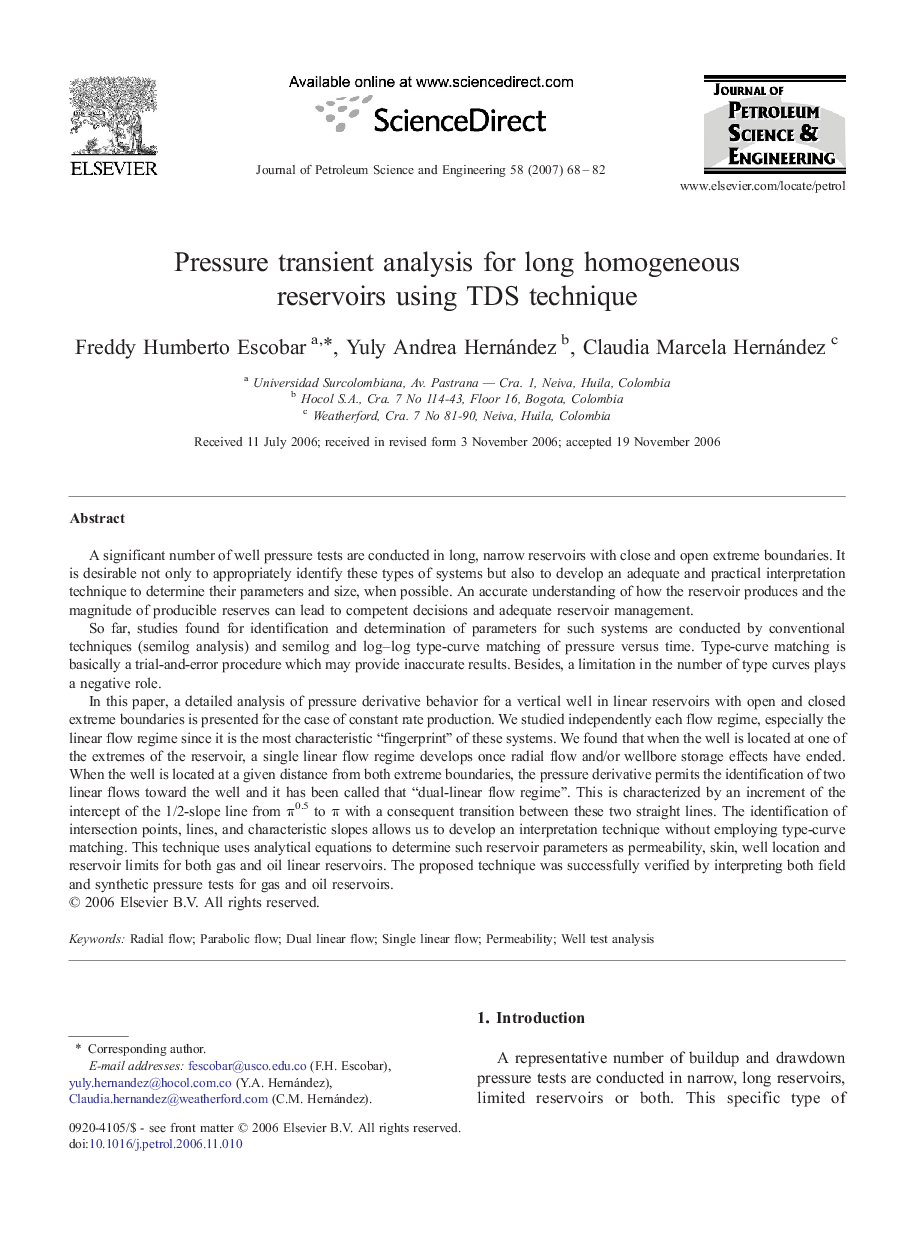| Article ID | Journal | Published Year | Pages | File Type |
|---|---|---|---|---|
| 1756336 | Journal of Petroleum Science and Engineering | 2007 | 15 Pages |
A significant number of well pressure tests are conducted in long, narrow reservoirs with close and open extreme boundaries. It is desirable not only to appropriately identify these types of systems but also to develop an adequate and practical interpretation technique to determine their parameters and size, when possible. An accurate understanding of how the reservoir produces and the magnitude of producible reserves can lead to competent decisions and adequate reservoir management.So far, studies found for identification and determination of parameters for such systems are conducted by conventional techniques (semilog analysis) and semilog and log–log type-curve matching of pressure versus time. Type-curve matching is basically a trial-and-error procedure which may provide inaccurate results. Besides, a limitation in the number of type curves plays a negative role.In this paper, a detailed analysis of pressure derivative behavior for a vertical well in linear reservoirs with open and closed extreme boundaries is presented for the case of constant rate production. We studied independently each flow regime, especially the linear flow regime since it is the most characteristic “fingerprint” of these systems. We found that when the well is located at one of the extremes of the reservoir, a single linear flow regime develops once radial flow and/or wellbore storage effects have ended. When the well is located at a given distance from both extreme boundaries, the pressure derivative permits the identification of two linear flows toward the well and it has been called that “dual-linear flow regime”. This is characterized by an increment of the intercept of the 1/2-slope line from π0.5 to π with a consequent transition between these two straight lines. The identification of intersection points, lines, and characteristic slopes allows us to develop an interpretation technique without employing type-curve matching. This technique uses analytical equations to determine such reservoir parameters as permeability, skin, well location and reservoir limits for both gas and oil linear reservoirs. The proposed technique was successfully verified by interpreting both field and synthetic pressure tests for gas and oil reservoirs.
